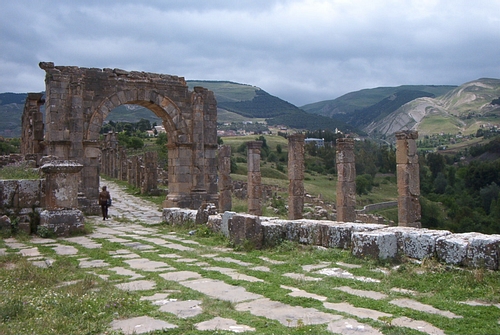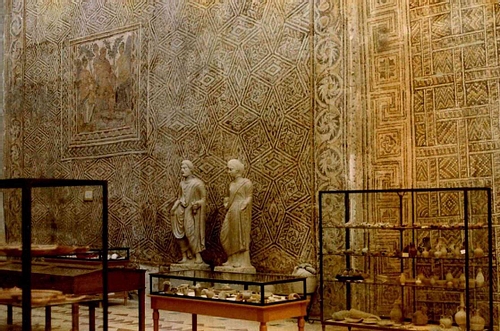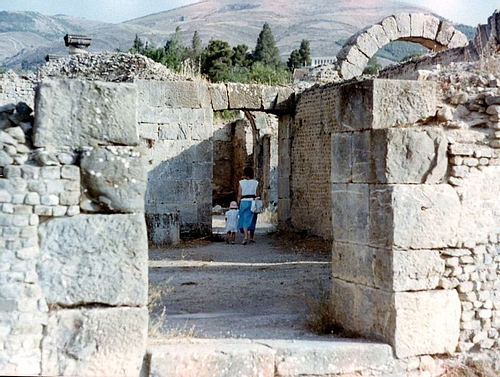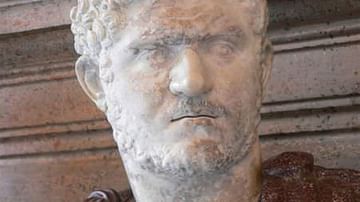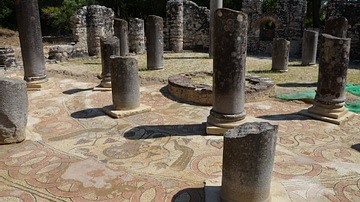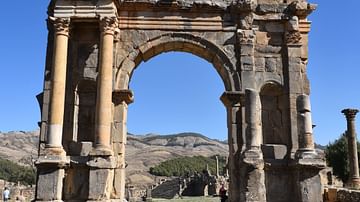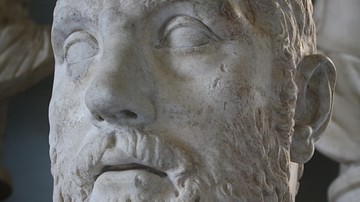There are few places on earth where we can say that these stones, on which we are standing, are the same stones where feet rested centuries before.
These places are important. We walk in the Roman Forum, we explore the ruins of the Flavian Amphitheatre, and we journey to the pyramids of Cairo. These places are known and as such preserved from ancient times until today, preserved due to the proximity in or near large contemporary cities that protect and promote their unlimited value.
Rome, Athens and Cairo retain a value that goes beyond the mere archaeological but they contain an interior jealously kept and hidden from normal view.
We are committed to normal digging and pulling out of the sand the testimony of a world preserved by chance, and we can also say that sometimes it helps to preserve the nature of what now under layers of soil, peat or under water, but natural selection is not only for living beings, it also applies to the material remains of the past. However, every kind of weather, and all kinds of land, can both preserve and destroy various materials, only leaving the merest crumbs to try to follow in order to reconstruct the world that was.
But where is humankind, where humans built? This is a factor that will win through every type of climate. It has given us as a society of storytellers that regale with these tales of the past long abandoned.
There are places on this earth that have been gradually abandoned and forgotten. Yet still they remain. Elements of life such as roads, houses and theatres, all remain perfectly still and waiting.
The example that strikes me most in my past is Djemila, in the mountains to the north of Algeria, in the province of Setif.
UNESCO registers it as a monument initially in 1982 as a site whose importance is of an example of a Roman town in a mountainous area. In 2009 their profile is updated with new levels of evaluation criteria, and as such, regaled with a higher importance. To understand why, we must consider the weight of the word "abandoned" or understand what makes this place unique. The city built under the Emperor Nerva remained thriving for 450 years. Yet it was hastily abandoned after the conquest of the Byzantines in 553 AD.
Nothing more of any real note happened in the history of Cuicul. Before UNESCO appeared, in 1909 it was touched by hands not felt in 1500 years.
It is amazing if you think that the modern city expands from Djemila just south of the abandoned city. Almost like an expansion, the new city is a neighborhood adjacent to the old one.
Since the 1980s when the city was taken charge of by UNESCO, there was a slow progress in the studies of the site. The references are almost non-existent. The museum began as a battered installation of mosaics. I wonder if this lack of modern studies can be attributed to the fact that there is nothing to explain, no academic debate, we have the dates, we have the inscriptions and we know perfectly well the intended use of every single public building. It is almost as if the lack of interpretative problems does not make it special.
It is in the glory of detail that this city comes to life.
Cuicul is an establishment of an ancient Roman colony founded during the reign of the Emperor Nerva in the late 1st century, (96 to 98 AD). The classic formula of Roman urban planning was adapted to the physical constraints of the site. At both ends of the 'Cardo Maximus' ('The Great Centre'), which is the very the backbone of the city, there are two gates.
In the 'Nucleus' (center) is the forum, an enclosed square surrounded by buildings essential to the function of civil and social life. The Capitol to the north, to the east the Curia, and the Civil Basilica (Basilica Julia) to the west.
Aristocratic dwellings set with rich mosaics from which they take contemporary Their names (the House of Amphitrite, the House of Europe, etc.) Multiplied during the course of the 2nd century is this central quarter, where the Temple of Venus, the Venus Genetrix (Mother) and the Macellum (covered market) are also located. However, this defensive position of the area resulted in a cramped city scape, hemmed in by walls, which hindered further development of the city.
The vestiges of the Temple of Venus and the aristocratic residences which are richly decorated with mosaics visible are also visible. Vestiges of monuments that have marked the expansion of the city (mid-2nd century) to the south also included is a new quarter, which is rich in both public and private buildings and dwellings.
Here was built the Arch of Caracalla, the temple of the family of Severus line of Imperial Dynasty. A new Forum was established in accordance with tradition; a theater with the capacity of 3000 seats was further developed (already completed under Antoninus Pius). Further along, baths were constructed in the reign of Commodus. Among the buildings of the classical period the Basilica clothing (cloth market) and a fountain that is a small-scale replication of the Meta Sudans in Rome are worthy of note.
The site has also been marked by Christianity in the form of several cult buildings: a cathedral, and a church baptistery are considered among the biggest of the Paleo-christian period.
From site evaluation criteria of the UNESCO site:
Criterion (iii): Testimony to exceptional Djémila bears testimony to which civilization has disappeared. It is one of the world's most beautiful Roman ruins. The archaeological vestiges, the Roman integrated urban planning and the surrounding environment comprise the elements of what represent the values that are attributed to this site.
Criteron (iv), is an outstanding example Djémila of a type of architectural ensemble illustrating a significant stage in the history of Roman North Africa, from the 2nd to the 6th centuries. In this instance, the classic formula of Roman urban planning has-been adapted to the geophysical constraints of the site. The site comprises of a diversified architectural and typological repertoire with a defensive system a Triumphal Arch, public conveniences and theater buildings and facilities for commerce and craft works. Also including the market of the brothers Cosinus that constitutes remarkable evidence of the city of economic prosperity.
There are places outside of normal reality, and we want these places to be accessible, although they are accessible to most of the opportunities, Djemila could become one of the most popular places in the world, a place for tourists, with a bookshop and café. Its amazing condition due to the fact that few people have visited from the abandoned Cuicul raises the question: how would an intensive development of this place work?
In this case, can we better preserve the site for posterity, better than anyone has done for 1500 years?

